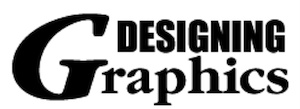 It's often a challenge for presenters to design graphics effectively for use in a videoconference. Many presenters overdo it on slides and tend to cram as much information as they can on each slide, rather than follow the "less is more" approach. I've seen a lot good, bad and ugly graphics in my time, and this post focuses on tips for creating more compelling graphics for videoconferences. This post is also a follow up to a series of articles on Videoconferencing Best Practices, which includes: 12 Tips for Moderating a Panel Discussion, 10 Verbal and Nonverbal Communication Tips and 7 Presentation Tips for Speakers.
It's often a challenge for presenters to design graphics effectively for use in a videoconference. Many presenters overdo it on slides and tend to cram as much information as they can on each slide, rather than follow the "less is more" approach. I've seen a lot good, bad and ugly graphics in my time, and this post focuses on tips for creating more compelling graphics for videoconferences. This post is also a follow up to a series of articles on Videoconferencing Best Practices, which includes: 12 Tips for Moderating a Panel Discussion, 10 Verbal and Nonverbal Communication Tips and 7 Presentation Tips for Speakers. Graphics work well in support of your message, but be careful you don’t become too dependent on the slides. Your audience should only see slides about 10% of the time you are speaking. If your audience is watching on a single screen, think of the how the 6:00 o’clock news is paced, and alternate between speaking, graphics, video and then back to speaking. No segment lasts very long – use this as your role model. The ideal ways to show slides are directly from the computer, and most all videoconference rooms have a PC connection for both in room and remote presentations.
For broadcasts, meetings and instruction the same rules apply when you prepare your slides.
- Keep things simple and concise
- Use a horizontal format
- Use a large sans serif typeface (Arial Bold)
- No less than 30 point size fonts
- Follow the 6 by 6 rule (6 words per line, 6 lines per page)
- Leave border room around the edges
- Fill the screen with the image
- Use simple graphs, illustrations, scanned images
- Use restraint with colors, high contrast works best
- Avoid transparencies and small type written pages
The rules for producing successful computer graphic designs for video are the opposite of desktop publishing. Choices in text, color, and design varies between the two because they are very different mediums and different rules apply. Graphics for use on television should conform to broadcast guidelines.
Sans serif typefaces (Helvetica, Arial) are more legible than serif typefaces because of their clean letterforms. They are used where quick legibility is vital (street and highway signs), or to catch one's attention with short bursts of type (newspaper headlines). Serif typefaces (Times, Garamond) tend to be more readable for large amounts of text on paper. However, they are ineffective to use as text on the video screen.
The most basic rules for preparing presentation materials are to Keep It Short and Simple, and Keep It Large and Legible. The following tips should provide you with a basic set of graphic guidelines.
1. Keep primary text in the center
Although "dead center" is usually an area to avoid in print media, viewers are used to watching video this way. Don't crowd the screen, instead use several screens to focus attention. Use a horizontal page format, and use six words per line and six lines per screen {Rule of Six}. (Figure 1)
2. Work within the STA (Safe Titling Area)
The STA is the cut off area for all screen images.The screen size between computers and TV monitors is not equal, and things can be cut off if they get to close to the edges. Leave at least a one inch border of empty space around each side of the page to be safe. (Figure 2)
3. Avoid thin horizontal lines, single dots, busy patterns and finely detailed grids
Always use 2 Pt. lines or larger, thin lines just don't cut it. Lines need to be thick and bold or they will flicker. Like thin lines, fine grids, patterns and dots cause flickering and picture distortion also. Avoid shading on printed hard copy because it creates buzzing patterns on camera. Supply details verbally, making charts and graphs simple (Figure 3) . Also, use clip art and flow charts sparingly, remember less is more.
4. Avoid highly saturated colors
Chroma crawl can be seen when two neighboring colors (text and background) bleed into each other. . The more saturated your colors are the more chroma crawl is added to the image. Don't overdo your use of color.
AVOID USING RED or GREEN FOR TEXT
5. Make text large and legible
- Use 30 Pt. for body text, and 40 - 48 Pt. for titles.
- Use no more than two typefaces per presentation
- Use drop shadows to add depth to text, drop shadows help separate text from the background (Figure 1)
- DON'T USE ALL CAPS FOR BODY TEXT, IT'S TOO HARD TO READ!! (Figure 2)
Do's
- Keep text large and legible by using 30 pt for body text, 30-45 pt for subtitles and 40-48 pt for titles
- 48 pt serif title: Times Bold
- 30 pt sans serif-body text: Helvetica Bold
- Use sans serif typeface for body text and serif typeface for titles (the opposite of desktop publishing)
- Use no more than two fonts and only one background per presentation
- Use white text on a dark blue to black background, this works the best readability from across the room
- Use drop shadows to add depth to text, drop shadows help separate text from the background
- Use a Truetype font like Monotype Sorts as bullets, it's more expressive than Option-8 (•)
Dont's
- Don't use Script fonts, they are too fancy for presentations
- ONCE AGAIN, DON'T USE ALL CAPS IT'S TOO HARD TO READ!!
- All caps works only for TITLES, but not recommended
Download this full document here: Slideshare.net | Designing Graphics for Effective Use in a Videoconference





 1. The Intro/Setting the Tone
1. The Intro/Setting the Tone








 to see this video in greater detail.
to see this video in greater detail.